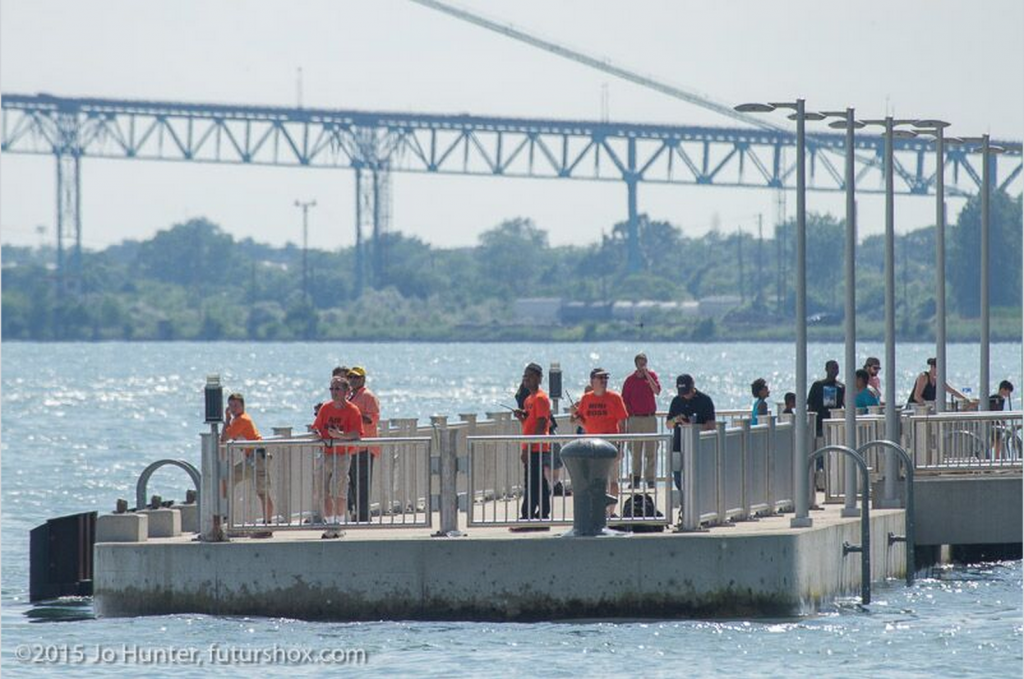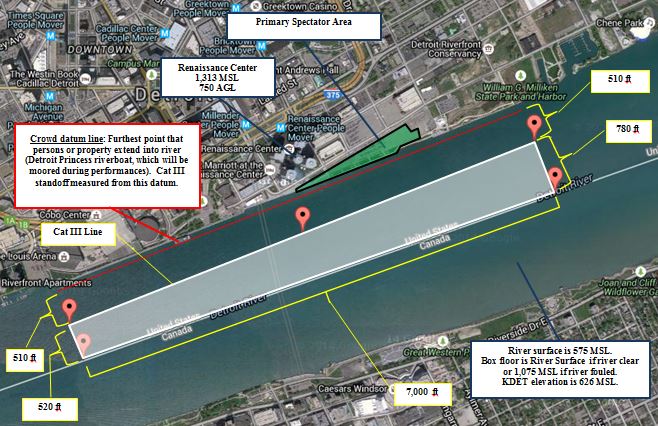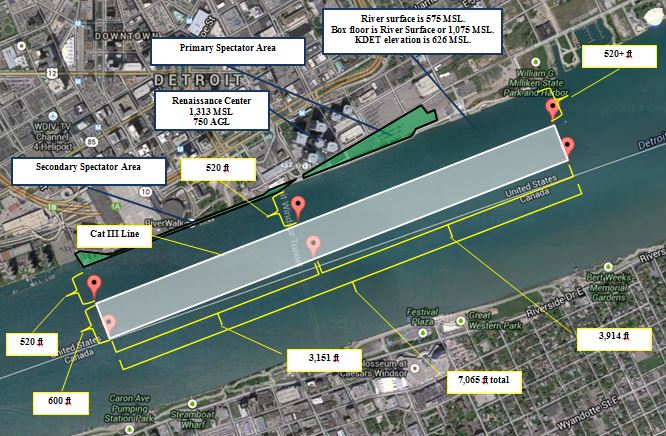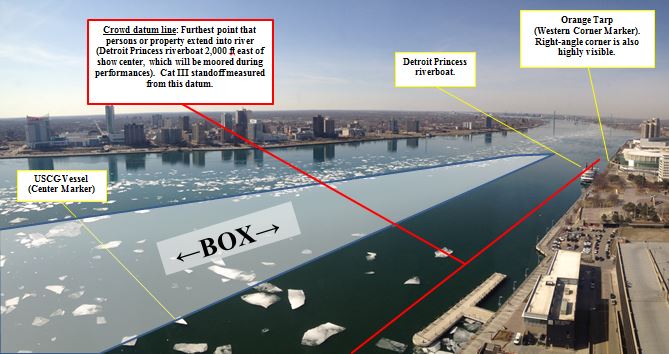These are the show notes to an audio episode. You can listen to the show audio here:
Better yet, subscribe to Airspeed through iTunes or your other favorite podcatcher. It’s all free!
We did it! We put on a full-up airshow over the Detroit River in some of the most challenging airspace in North America. In this episode, David Allen takes the bully mic again and Dean Greenblatt (“BIRD” during the show) joins Steve to talk about what went right, what went wrong, and what’s in store for the show next year.
 Hear how we put a jet, three gliders, and lots of other aircraft up in this box and managed to do it despite low weather on Saturday, communications SNAFUs, and the fact that nobody on the crew had ever put on an airshow before. It’s an exciting story of what can happen when a dedicated crew of volunteers gathers together to turn dinosaurs into decibels.
Hear how we put a jet, three gliders, and lots of other aircraft up in this box and managed to do it despite low weather on Saturday, communications SNAFUs, and the fact that nobody on the crew had ever put on an airshow before. It’s an exciting story of what can happen when a dedicated crew of volunteers gathers together to turn dinosaurs into decibels.
Many thanks to Jo Hunter for the great photos!










